- Products
- For Industrial
- For High Purity
- For Lab & Research
- BTU Wobbe CARI Calorimeters
- CEMS Analyzers
- Cavity Ring-Down Spectroscopy Analyzers
- Dew Point Chilled Mirror Analyzers
- Dew Point Moisture Meters
- Excimer Total Sulfur-Nitrogen Lab & Process Analyzers
- 开云app官方网站登录
- Optical Absorption Spectroscopy Analyzers
- Oxygen Analyzers & Safety Monitors
- Relative Humidity Analyzers
- kaiyun开云平台体育官方网站
- kaiyun开云平台
- Applications
- Application Assistance
- Agricultural Production
- Airborne Molecular Contaminants
- Air Separation Units & Nitrogen Plants
- Atmospheric & Air Quality
- Battery Manufacturing
- Benzene Fenceline Monitoring
- Biofuel Analysis
- Carbon Capture
- Chemical Manufacturing
- Energy
- Environmental Monitoring
- Evolved Gas Analysis
- Flare Gas
- Food and Beverage
- Gas Purity Analysis
- Hydrogen Production
- Lab & Research
- Petrochemical and Refining
- Pharmaceuticals, Life Science & Biotechnology
- Semiconductor
- Steelmaking Basic Oxygen Process
- Water Quality Analysis (TOC COD BOD TNb)
- Resources
- Service
- Application Assistance
- Commissioning
- Data Services
- Service Contracts
- Spares & Upgrades
- Training
- RMA for Oxygen Monitors
- Rental CRDS Analyzers
- Remote Connected Service
- Analyzer Performance Verification Program
- Commercial Humidity Calibration Laboratories
- Accredited SCS Calibration Laboratory
- Accredited DAkkS Calibration Laboratory
- About Us
- Events
- Careers
- Contact
Labs & Research
Here are a few reasons whyProcess Insights Analytical Solutionsare important to your process optimization and safety:
- Accuracy:For decades, our analytical solutions are typically more accurate than other competitive solutions. Our unmatched precision measurements will keep your plant, process, the environment, and people safe.
- Speed:Delivering continuous, real-time analytical solutions makes time-sensitive experiments or simulations easy.
- Improved Process Control: Gas analysis solutions provide real-time data on the composition of gases used in industrial processes, allowing for better process control and optimization. This leads to increased efficiency, reduced waste, and improved product quality.
- Enhanced Safety:Gas analysis solutions can detect potentially hazardous gases and alert operators to potential safety risks, helping to prevent accidents and protect personnel and equipment.
- Regulatory Compliance:Gas analysis solutions can help companies meet regulatory requirements for emissions monitoring and control, ensuring compliance with environmental regulations and avoiding fines or penalties.
- Cost Savings:Gas analysis solutions can help companies identify opportunities for cost savings by optimizing processes, reducing waste, and minimizing energy consumption.
- Predictive Maintenance:Gas analysis solutions can provide insights into the health and performance of equipment, allowing companies to proactively identify and address issues before they become costly problems.
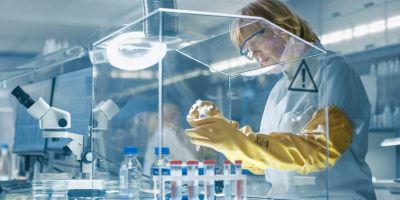
Academic & Advanced Research
Gas analyzers are used in academic and advanced research labs for a variety of reasons. Some of the most common reasons include:
- Quantitative analysis:Gas analyzers can be used to accurately measure the concentration of gases in a sample. This is important for a wide range of research applications, including environmental monitoring, medical research, and industrial processes.
- Process control:In many industries, it is important to maintain precise control over the composition of gases in a system. Gas analyzers can be used to monitor gas concentrations in real-time, allowing researchers to adjust process parameters as needed to ensure consistent and reliable results.
- Safety:Gas analyzers can be used to detect potentially dangerous gases in the environment. This is particularly important in research labs where hazardous chemicals are often used, as gas analyzers can provide an early warning of potential safety hazards.
- Environmental monitoring:Gas analyzers can be used to monitor air quality and detect pollutants in the environment. This is important for understanding the impact of human activities on the environment, and for developing strategies to mitigate the effects of pollution.
- Quality control:In industries such as food and beverage production, gas analyzers can be used to ensure product quality and safety. Gas analyzers can detect contaminants or impurities in gases used in production processes, allowing researchers to maintain high standards of quality.
- Chemical Analysis:Used in chemistry to identify and quantify molecules. With the help of an Extrel Mass Spectrometer, researchers can analyze the chemical composition of a sample with high sensitivity and accuracy. This information can be used to identify unknown compounds, monitor chemical reactions, and optimize chemical processes.
- Fundamental Research:Used in fundamental research to study the structure, properties, and behavior of atoms, molecules, and ions. Researchers can use an Extrel Mass Spectrometer to study the fundamental properties of molecules and ions, such as their ionization potentials, fragmentation patterns, and reaction kinetics.
- Environmental Science:Used in environmental science to analyze the composition of air, water, and soil samples. Researchers can use an Extrel Mass Spectrometer to detect and quantify trace levels of pollutants and other contaminants in the environment.
- Materials Research:Used in material science to study the composition and structure of materials. Researchers can use an Extrel Mass Spectrometer to analyze the composition of thin films, coatings, and other materials, and to study their properties, such as thermal stability and mechanical strength.
Our CRDS analyzers that are commonly used in this field include:
- Halo™:This is a high-performance CRDS analyzer that offers sub-ppb sensitivity for a range of gases, including water vapor, methane, ammonia, and hydrogen fluoride. It is commonly used in environmental and atmospheric research, as well as in materials science and semiconductor manufacturing.
- CO-rekt™:This analyzer is designed for accurate and reliable measurements of carbon monoxide in a range of industrial gases, including hydrogen, nitrogen, and argon. It is commonly used in applications such as syngas production, chemical processing, and fuel cell research.
- Prismatic™ 3:This analyzer is designed for high-precision measurements of water vapor in a range of gases, including hydrogen, nitrogen, and natural gas. It is commonly used in environmental research, as well as in industrial applications such as semiconductor manufacturing and natural gas processing.
Our Quadrupole Mass Spectrometers that are commonly used in this field include:
- MAX300-LG™:This instrument is designed for high-sensitivity gas analysis and is commonly used in research applications such as trace gas analysis, leak detection, and gas purity testing.
- MAX300-RTG™ 2.0:This instrument is designed for real-time gas analysis in a range of applications, including petrochemical processing, gasification, and environmental monitoring.
- MAX300-CAT™:This instrument is designed for catalysis research and is commonly used in applications such as reaction monitoring, product analysis, and kinetic studies.
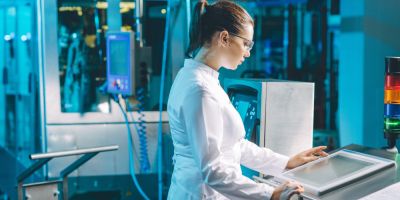
Materials & Catalysis Research
Materials and Catalysis Research often use gas analyzers for a variety of purposes:
- Process Optimization:To optimize chemical processes by monitoring the composition of gases in real-time. This information can be used to adjust process parameters and improve product quality and efficiency.
- Reaction Kinetics:To study the kinetics of chemical reactions by monitoring the concentration of reactants and products over time. This information can be used to determine reaction rates, mechanisms, and kinetics.
- Catalyst Characterization:To study the properties of catalysts by monitoring the concentration of gases produced during a catalytic reaction. This information can be used to determine the activity, selectivity, and stability of catalysts, as well as to optimize their performance.
- Material Analysis:Can be used to study the composition of materials, such as thin films and coatings, by analyzing the gases produced during their synthesis or degradation.
- Emissions Monitoring:Trace gas analyzers can be used to monitor emissions from industrial processes or vehicles. These analyzers can detect and measure trace levels of pollutants, such as nitrogen oxides (NOx) and sulfur dioxide (SO2), which are harmful to the environment and human health.
- Environmental Monitoring:Trace gas analyzers can be used to monitor the concentration of gases in the atmosphere, such as greenhouse gases like carbon dioxide (CO2). This information can be used to track changes in the environment and assess the impact of human activities on the atmosphere.
- Quality Control:Trace gas analyzers can be used in manufacturing processes to ensure product quality by detecting and measuring low-level impurities or contaminants. For example, in the semiconductor industry, trace gas analyzers are used to detect and measure impurities in the manufacturing process that could affect the performance of electronic components.
- Biological Applications:Trace gas analyzers can be used in biological applications, such as breath analysis or metabolic studies. These analyzers can detect and measure low-level concentrations of gases, such as oxygen (O2) and carbon dioxide (CO2), which are important in metabolic processes.
OurCRDS Gas Analyzersthat are used in this field include:
- Halo™ CO:This analyzer is used for trace carbon monoxide measurements in a variety of gases, including those used in the production of carbon nanotubes.
- Halo™ CO2:This analyzer is used for trace carbon dioxide measurements in a variety of gases, including those used in the production of specialty gases and in catalytic processes.
- Halo™ HCl:This analyzer is used for trace hydrogen chloride measurements in a variety of gases, including those used in the production of pharmaceuticals and specialty chemicals.
OurQuadrupole Mass Spectrometersare widely used in Materials and Catalysis Research for gas analysis include:
- MAX300-LG™:This analyzer is used for gas analysis in materials and catalytic research. It offers high sensitivity and a wide dynamic range, making it suitable for a variety of applications.
- MAX300-RTG™ 2.0:This analyzer is used for real-time gas analysis in a variety of materials and catalytic research applications. It offers high sensitivity and a wide dynamic range, making it suitable for monitoring changes in gas composition over time.
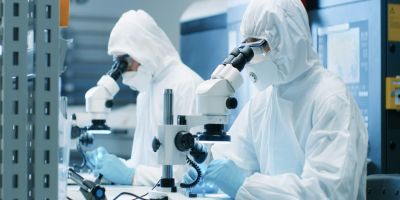
LASER ABLATION
Gas analyzers can be used in laser ablation experiments to monitor the chemical composition of the ablated material and the surrounding gas environment. In a typical laser ablation experiment, a focused laser beam is used to vaporize a small amount of material from the surface of a solid sample. The resulting plume of vaporized material expands rapidly, creating a gas environment that can be analyzed using gas analyzers.
To use gas analyzers for laser ablation, the instrument is typically positioned near the ablation spot to monitor the gas environment in real-time. The gas analyzer may be used to measure a range of parameters, including the concentration of various gases, such as oxygen, nitrogen, and carbon dioxide. This information can then be used to gain insights into the laser ablation process, including the efficiency of material removal, the composition of the ablated material, and the formation of various reaction products.
Laser ablation is used in a variety of applications, including:
- Material removal:Laser ablation can be used to remove precise amounts of material from a solid surface, allowing for the creation of complex shapes or patterns.
- Spectroscopy:Laser ablation can be used to create plasmas of materials for spectroscopic analysis. By analyzing the emission or absorption spectra of the plasma, researchers can identify the elemental composition of the material.
- Microfabrication:Laser ablation can be used to create microstructures in materials for microfluidic devices, microelectromechanical systems (MEMS), and other microfabricated devices.
- Medical applications:Laser ablation is used in medical applications for procedures such as removing tumors or correcting vision problems.
For example, ourQuadrupole Mass Spectrometerscan be used to monitor the composition of the gas environment during laser ablation experiments to determine the presence and concentration of specific gases, such as oxygen, nitrogen, and carbon dioxide. This information can be used to gain insights into the laser ablation process and the composition of the ablated material.
They also be used to analyze the ablated material directly. In this case, the ablated material is ionized by the laser, and the resulting ions are analyzed by the mass spectrometer to determine the elemental composition of the ablated material. This information can be used to gain insights into the material properties and the efficiency of the laser ablation process.
- MAX300-LG™ :This analyzer is specifically designed for laser ablation applications, offering high sensitivity and fast response time to monitor the gas environment in real-time during laser ablation experiments.
- MAX300-BIO™This analyzer is designed for biological applications but can also be used for laser ablation experiments. It offers high sensitivity and the ability to detect a wide range of gases.
- MAX300-RTG™ 2.0: This analyzer is designed for real-time gas analysis applications and can be used to monitor the gas environment during laser ablation experiments.

OUTGASSING STUDIES
Outgassing studies are investigations into the release of volatile substances, such as gases or vapors, from a material or system under vacuum conditions. When a material is placed in a vacuum, the reduced pressure can cause trapped gases or other volatile substances within the material to be released, a process known as outgassing. This can be a concern in a variety of applications, including space exploration, semiconductor manufacturing, and vacuum coating processes.
Analysts useOutgassing Studiesto determine the chemical and physical properties of materials that are under various temperature and pressure conditions. Outgassing research analyzes materials used in the production of Aerospace and Semiconductor devices. This application is also well-suited to analyze devices such as Medical/Surgical Equipment, Automotive Parts and High Precision Ceramics, where high quality results are critical for successful research studies.
To perform Outgassing Studies, Mass Spectrometers that provide high sensitivity and high resolution are needed. OurEXTREL™MAX-QMS™Mass Spectrometer System meets these needs. Along with high sensitivity up to 6 mA/Torr, the MAX-QMS System gives users the ability to measure both water and other possible contaminants. The Merlin Automation™ Data System provides the user with the ability to monitor outgassing during a short experiment, continuously for days or even weeks.

HELIUM SCATTERING
Secondary ion mass spectrometry (SIMS) is an analytical technique used to analyze the chemical composition of solid surfaces and thin films at the atomic and molecular scale. In SIMS, a beam of high-energy ions is directed at a sample, causing the ejection of secondary ions from the surface of the sample. These secondary ions are then analyzed using a mass spectrometer to determine their chemical identity and abundance.
Helium scattering is a surface analysis technique that is used to study the properties of surfaces at the atomic and molecular scale. In helium scattering, a beam of helium atoms is directed at a surface, and the scattering of the helium atoms is measured to obtain information about the surface structure and composition.
氦原子散射的基本原理是,when helium atoms collide with a surface, they are scattered in a predictable pattern that is determined by the properties of the surface. By measuring the angle and energy distribution of the scattered helium atoms, researchers can determine properties such as surface roughness, surface coverage, and the spacing and arrangement of surface atoms.
One technique used to characterize the physical and electronic properties of the surface of a material isHelium Scatteringusing mass spectrometry. A beam of atoms, usually Helium, is aimed at a surface, and atoms from the surface are ejected. Mass Filters are used to measure the atoms that are scattered, and to pinpoint the angle and time at which the scattering atoms are being released (time of flight analysis). Since the events of this non-destructive surface science method happen quickly, this application requires the use of mass filters that provide high stability and fast response times. OurEXTREL™Quadrupole Mass FiltersandRF/DC Power Suppliesare the ideal choice for Scattering applications.
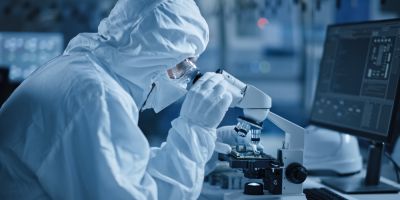
Secondary Ion Mass Spectrometry
Secondary Ion Mass Spectrometry (SIMS) is a technique used in materials science and analytical chemistry to analyze the composition and distribution of elements and isotopes within a solid sample.Secondary Ion Mass Spectrometry (SIMS)is used to detect and characterize trace elements at or near the surface of a solid or thin film allowing researchers to understand the chemical composition of the surface.
This surface science technique requires the use of systems with very high sensitivity and the ability to perform high resolution energy analysis. SIMS is useful for a wide variety of surface analysis. For example, SIMS can be used to detect and analyze contaminants on a surface, analyze materials and devices to ensure the quality of specific products, and study atomic scale defects that may occur in the manufacturing of semiconductor chips or other materials.
There are several reasons why ourEXTREL™MAX300-RTG™ 2.0mass spectrometeris well-suited for SIMS analysis:
- High sensitivity:It is equipped with a high-sensitivity detector that can detect even small amounts of secondary ions generated by the SIMS process.
- 高分辨率:质谱仪提供嗨gh resolution, enabling the identification and separation of ions with similar masses, which is important for accurate analysis of complex samples.
- Versatility:Is versatile and can be used for a range of applications, including SIMS analysis of solid samples, as well as gas analysis.
- Easy integration:Designed to be easily integrated with other SIMS systems, making it a popular choice for researchers and technicians working in the field of materials science and analytical chemistry.
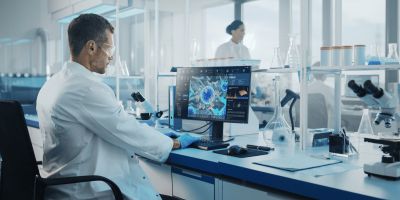
TEMPERATURE PROGRAMMED DESORPTION
Temperature programmed desorption (TPD) is a surface analysis technique used to study the adsorption and desorption of gases on solid surfaces. TPD involves heating a sample to gradually increase the temperature while monitoring the amount of gas released from the surface. By analyzing the temperature dependence of the desorption, researchers can obtain information about the strength and nature of the adsorption.
TPD requires heating the sample to high temperatures, which can cause some samples to decompose or react with the surrounding atmosphere. This can lead to changes in the sample properties and affect the interpretation of the TPD results. Sample preparation for TPD can be challenging, as the sample needs to be properly cleaned and prepared to ensure that it is free of contaminants that could interfere with the TPD measurements.
OurEXTREL™MAX300-EGAcomes equipped to import a Start-of-Heating signal from the TGA for easy data synchronization and features a chemically inert transfer line specially designed keep the sample hot and under vacuum all the way to the ionizer, to guard against condensation or chemical interaction.
The MAX300-EGA is equipped with a high-performance mass spectrometer that can provide high-resolution mass spectra of desorbed gases during TPD analysis. The system also includes a range of gas handling and temperature control options that allow for precise control of the temperature ramp and gas flow during TPD experiments.
Furthermore, the system is equipped with advanced software that allows for the automated acquisition and analysis of TPD data, as well as the generation of TPD curves and spectra. The software also includes advanced data analysis tools that enable the user to analyze the TPD data in detail and extract meaningful information about the desorption behavior of the molecules on the surface.

Ultra-Pure and Pure Water
纯水在许多实验室里是一个关键的资源ry settings, and is used for a variety of purposes, including:
- Chemical reactions:Pure water is often used as a solvent or reagent in chemical reactions, particularly those involving sensitive or reactive materials. In these applications, the purity of the water is important to ensure accurate and reproducible results.
- Equipment cleaning:Pure water is used to clean laboratory equipment, including glassware, instruments, and surfaces. The absence of impurities in the water helps to prevent contamination of samples and equipment, and can improve the accuracy of analytical measurements.
- Biological applications:Pure water is essential for many biological applications, such as cell culture, DNA sequencing, and protein purification. The quality of the water is critical in these applications, as any contaminants can interfere with the biological processes being studied.
- 分析测量:Many analytical techniques, such as high-performance liquid chromatography (HPLC), require pure water as a solvent or mobile phase. The quality of the water is critical in these applications, as any impurities can affect the accuracy and reproducibility of the measurements.
- Quality control:Pure water is often used as a quality control standard in laboratory settings, to ensure that analytical instruments and methods are functioning properly. In these applications, the purity of the water is critical to ensure accurate and reproducible results.
Ultra-pure water (UPW)is water that has been purified to high levels of specification. Ultra-pure water is essential to every laboratory. UPW must not contain any detectable endotoxins. This level of purity makes it a perfect reagent for laboratory work. UPW is used in the semiconductor and pharmaceutical industries. The quality of water is defined through a series of measurements of conductivity (µS/cm) or resistivity (MΩ-cm),Total Organic Carbon (TOC)in parts per billion (ppb), and bacterial count (CFU/ml).
OurLAR™QuickTOCultra™analyzeruses a high-temperature catalytic combustion method to measure the total organic carbon (TOC) content of ultra-pure water. The analyzer injects a sample of the water into a furnace, where it is oxidized at high temperatures, converting the organic carbon to CO2. The amount of CO2 produced is then measured using a non-dispersive infrared (NDIR) detector, and this is used to determine the TOC content of the water.
This analyzer uses a high-temperature oxidation method to measure the chemical oxygen demand (COD) of ultra-pure water. The analyzer uses a digestion vessel that contains a mixture of sulfuric acid and potassium dichromate. When a sample of the water is added to the vessel, the organic and inorganic compounds in the water are oxidized, releasing CO2. The amount of CO2 produced is then measured using an NDIR detector, and this is used to determine the COD content of the water.

Wastewater
Monitoring wastewater in laboratory and research industries is important for several reasons:
- Safety:Laboratory and research industries often work with hazardous chemicals and materials that can be harmful to the environment and human health if they are released into wastewater. Monitoring wastewater allows for early detection of potential hazards and enables timely intervention to prevent contamination and harm.
- Regulatory compliance:There are regulations in place that require laboratory and research industries to monitor and report on the quality of their wastewater to ensure compliance with environmental regulations.
- Resource conservation:Monitoring wastewater can help identify opportunities for water conservation and efficient use of resources, which can reduce operational costs and minimize the environmental impact of laboratory and research industries.
- Process optimization:Monitoring wastewater can provide valuable insights into the performance of laboratory and research processes, enabling process optimization and improving efficiency.
- Research and development:Wastewater monitoring can also be used to support research and development efforts in the laboratory and research industries. For example, it can be used to study the fate and transport of contaminants, as well as to identify new contaminants and emerging threats to the environment and human health.
一些常见的参数经常监视laboratory wastewater include:
- pH:The pH of wastewater can affect its ability to support aquatic life and the efficiency of wastewater treatment processes.
- Total suspended solids (TSS):TSS are small particles that are suspended in wastewater and can cause turbidity, which can interfere with wastewater treatment processes.
- Chemical oxygen demand (COD):COD is a measure of the amount of oxygen that is required to oxidize organic and inorganic compounds in wastewater.
- Biochemical oxygen demand (BOD):BOD is a measure of the amount of oxygen that is consumed by microorganisms as they break down organic matter in wastewater.
- Total nitrogen (TN):TN is a measure of the total amount of nitrogen present in wastewater, including both organic and inorganic nitrogen.
- Total phosphorus (TP):TP is a measure of the total amount of phosphorus present in wastewater, which can contribute to eutrophication and algal blooms in receiving water bodies.
- Metals:Some laboratory wastewater may contain metals such as mercury, lead, and chromium, which can be toxic to aquatic life and humans.
- Organic compounds:Laboratory wastewater may contain a range of organic compounds, including solvents, detergents, and pesticides, which can be harmful to the environment and human health.
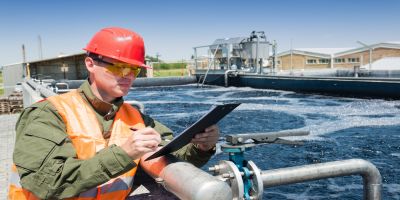
Environmental Research, Safety & Compliance
Laboratories contain significant risks, and the prevention of laboratory accidents requires great care and reliable instrumentation and analytical solutions.Laboratory operations use hazardous chemicals and equipment, which may pose health hazards and physical hazards to laboratory personnel. Gas leaks in the laboratory are often difficult to detect and cause serious consequences. Some risks includeasphyxiation, fire or explosion from compressed gases. The Occupational Exposure to Hazardous Chemicals in Laboratories standard (29 CFR 1910.1450) was created specifically for non-production laboratories.
- Ambient air analysis, pyrolysis, natural materials, isotopic analysis, greenhouse gas monitoring
- Full composition and trace gas analyzers for atmospheric chemistry and environmental research
- River water, contamination, and wastewater monitoring
- Climatic chamber and glovebox moisture, temperature and dew point sensor validation
- Trace gas analyzers for compounds, including H2O, O2, H2, CH4, NH3, CO, CO2, N2, Ar, He, VOC, HAPs, hydrocarbons, etc.

Gas Detection
Cavity Ring-Down Spectroscopy (CRDS) trace gas analyzers are used in laboratories for sensitive and selective detection and quantification of trace gases in gas mixtures. They work by measuring the absorption of light in a resonant cavity, which is coated with a material that selectively absorbs the target gas of interest. CRDS trace gas analyzers are used in a wide range of applications in laboratory settings, including:
- Environmental monitoring:CRDS trace gas analyzers are used for the detection and quantification of trace gases in ambient air, soil, and water. This includes monitoring of greenhouse gases, such as carbon dioxide and methane, as well as other pollutants, such as nitrogen oxides.
- Industrial process monitoring:crd微量气体分析仪用于工业开云手机版app下载安装最新版ttings to monitor emissions from manufacturing processes, and to ensure compliance with environmental regulations. This includes monitoring of gases such as sulfur dioxide, hydrogen chloride, and ammonia.
- Medical and biological research:CRDS trace gas analyzers are used in medical and biological research to study the role of trace gases in disease and metabolism. For example, they can be used to monitor exhaled breath for the presence of trace gases that may be indicative of lung disease or other medical conditions.
- Atmospheric research:CRDS trace gas analyzers are used in atmospheric research to study the chemistry and dynamics of the atmosphere. This includes monitoring of trace gases that are involved in atmospheric processes, such as ozone depletion and atmospheric warming.

Sterilization
A sterilant gas is ethylene oxide gas or hydrogen peroxide that can destroy or inactivate many types of microorganisms.Sterilant gas monitoring is the detection of hazardous gases used by health care and other facilities to sterilize medical supplies that cannot be sterilized by heat or steam methods.Continuous gas analyzers are used as part of thesafety programto provide prompt alerts to nearby workers in the event that there is a leak of the sterilant gas.
- Measure sterilant gas concentration in real-time under ambient or vacuum conditions
- Monitor H2O2and H2O、环氧乙烷、氮氧化物的循环发展erilization chamber, filling isolators and resistometers
- 光学RH和相对年代aturation measurements
- Sterilization process control, logging, or troubleshooting
- Independent reference for potential load production release
SOLUTIONS FOR LAB & RESEARCH
CHILLED MIRROR ANALYZERS
OXYGEN ANALYZERS & SAFETY MONITORS
QUADRUPOLE MASS SPECTROMETERS
TOC COD BOD WATER QUALITY ANALYZERS
LAB & ELEMENTAL ANALYZERS
nir uv vis ANALYZERS
Questions? We’re here to help.

Terms and Conditions of Sale - Extrel
Sellers-Agreement-Purchasing-Terms-PUR-0026-FR-rev3 - Extrel
Terms and Conditions – Process Insights Swiss AG - MBW
Terms and Conditions – Tiger Optics
Terms and Conditions – Process Insights AG - LAR
Terms and Conditions – Guided Wave
Terms and Conditions of Sale – COSA Xentaur
SITE MAP
Copyright © 2023 Process Insights, Inc. All Rights Reserved.